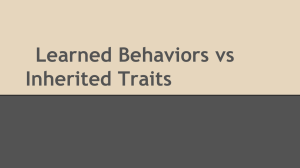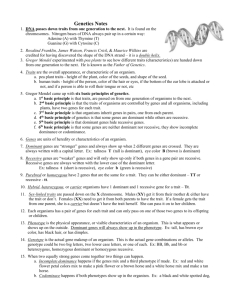Genetic Traits
advertisement
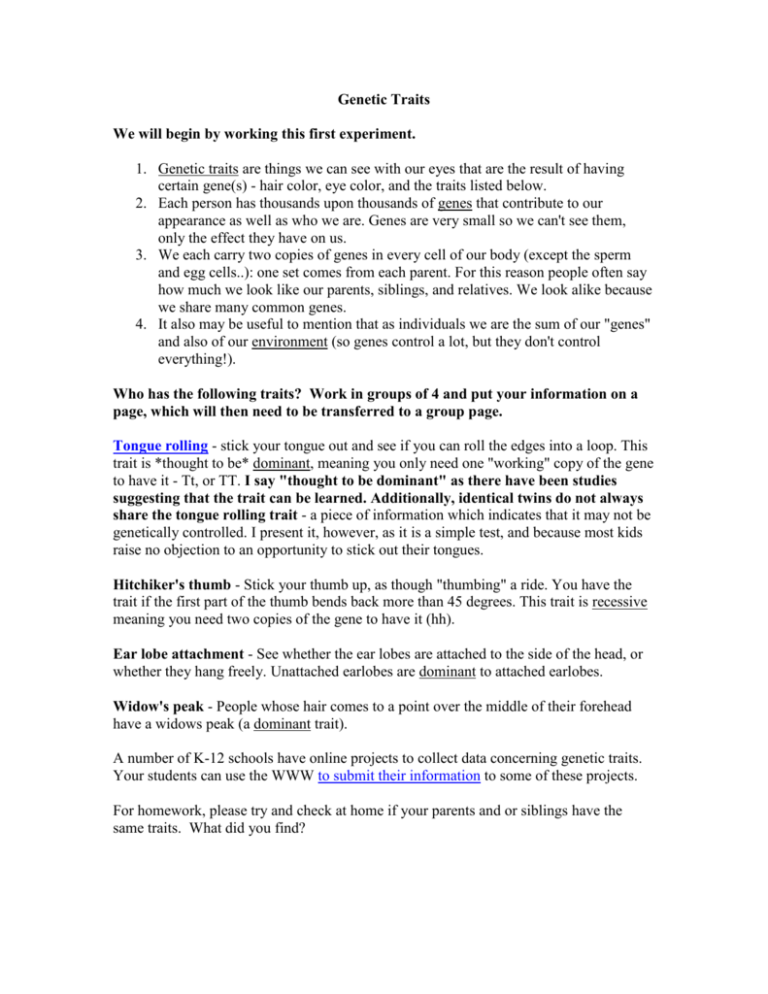
Genetic Traits We will begin by working this first experiment. 1. Genetic traits are things we can see with our eyes that are the result of having certain gene(s) - hair color, eye color, and the traits listed below. 2. Each person has thousands upon thousands of genes that contribute to our appearance as well as who we are. Genes are very small so we can't see them, only the effect they have on us. 3. We each carry two copies of genes in every cell of our body (except the sperm and egg cells..): one set comes from each parent. For this reason people often say how much we look like our parents, siblings, and relatives. We look alike because we share many common genes. 4. It also may be useful to mention that as individuals we are the sum of our "genes" and also of our environment (so genes control a lot, but they don't control everything!). Who has the following traits? Work in groups of 4 and put your information on a page, which will then need to be transferred to a group page. Tongue rolling - stick your tongue out and see if you can roll the edges into a loop. This trait is *thought to be* dominant, meaning you only need one "working" copy of the gene to have it - Tt, or TT. I say "thought to be dominant" as there have been studies suggesting that the trait can be learned. Additionally, identical twins do not always share the tongue rolling trait - a piece of information which indicates that it may not be genetically controlled. I present it, however, as it is a simple test, and because most kids raise no objection to an opportunity to stick out their tongues. Hitchiker's thumb - Stick your thumb up, as though "thumbing" a ride. You have the trait if the first part of the thumb bends back more than 45 degrees. This trait is recessive meaning you need two copies of the gene to have it (hh). Ear lobe attachment - See whether the ear lobes are attached to the side of the head, or whether they hang freely. Unattached earlobes are dominant to attached earlobes. Widow's peak - People whose hair comes to a point over the middle of their forehead have a widows peak (a dominant trait). A number of K-12 schools have online projects to collect data concerning genetic traits. Your students can use the WWW to submit their information to some of these projects. For homework, please try and check at home if your parents and or siblings have the same traits. What did you find? 2. So, you know that traits are carried from one generation to the next. How is this done? To answer this question, as well as the following questions, please go to the following link: http://kidshealth.org/teen/your_body/health_basics/genes_genetic_disorders.html# 1. What are genes? 2. How many chromosomes do humans have? 3. Where are genes carried? How do they work? What is meant by genes being dominant or recessive? 4. What is a gene mutation? 5. What is gene therapy? Please use the following link to look at a map of the human chromosomes. http://web.rollins.edu/~jsiry/HUMAN-1.gif 3. What can gene mutations cause? There are many genetic disorders and your job will be to pick one and make a quick presentation to the rest of the class. Your presentation should be done with the use of multimedia and will be the notes for everyone to use. When describing the mutation you should focus on: how is it caused, symptoms, effects, how common, treatment, and interesting facts. So, when you are done you should have a small write up about the disorder outlining each of the above points, as well as a multimedia presentation that can be shown to the rest of the class. DCS Genetic Disorder Name: ________________________ Teacher: Mr. Schlosser Date of Presentation: ____________ Title of Work: ___________________ Criteria 1 2 Points 3 4 Student presents Audience has Audience cannot Student presents information in difficulty understand information in logical, following logical sequence interesting Organization presentation because presentation there is no sequence which audience sequence which because student of information. can follow. audience can jumps around. follow. Student is Student Student does not have uncomfortable demonstrates full grasp of information; with information Student is at ease knowledge (more Content student cannot and is able to with content, but than Knowledge answer questions answer only fails to elaborate. required)with about subject. rudimentary explanations and questions. elaboration. Student used Student occasional Visuals related to visuals to Student used no used visuals that text and reinforce screen Visuals visuals. rarely support text presentation. text and and presentation. presentation. Presentation has Presentation had Student's presentation no more than two Presentation has three misspellings had four or more misspellings no misspellings and/or Mechanics spelling errors and/or and/or or grammatical grammatical grammatical errors. grammatical errors. errors. errors. Student mumbles, Student incorrectly incorrectly Student used a Student's voice is pronounces terms, pronounces terms. clear voice and clear. Student and speaks too Audience correct, precise Delivery pronounces most quietly for students in members have pronunciation of words correctly. the back of class to difficulty hearing terms. hear. presentation. Total----> Teacher Comments: ____ ____ ____ ____ ____ ____

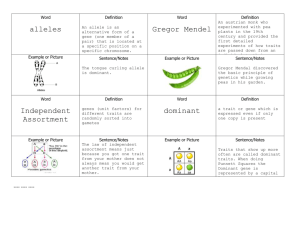
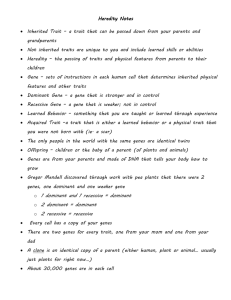





![Biology Chapter 3 Study Guide Heredity [12/10/2015]](http://s3.studylib.net/store/data/006638861_1-0d9e410b8030ad1b7ef4ddd4e479e8f1-300x300.png)
